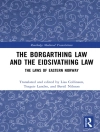This consequential work by a pioneer aviation historian fills a significant lacuna in the story of the defeat of France in May-June 1940 and more fully explains the Battle of Britain of July–October of that year and the influence it had on the Luftwaffe in the 1941 invasion of the USSR. Robin Higham approaches the subject by sketching the story and status of the three air forces–the Armée de l’Air, the Luftwaffe, and the Royal Air Force–their organization and preparation for their battles. He then dissects the the campaigns, their losses and replacement policies and abilities. He paints the struggles of France and Britain from both the background provided by his recent
Two Roads to War: From Versailles to Dunkirk (NIP, 2012) and from the details of losses tabulated by
After the Battle’s The Battle of Britain (1982, 2nd ed.) and Peter Cornwell’s
The Battle of France Then and Now (2007), as well as in Paul Martin’s
Invisible Vainqueurs (1990) and from the Luftwaffe summaries in the British National Archives Cabinet papers. One important finding is that the consumption and wastage was not nearly as high as claimed. The three air forces actually shot down only 19 percent of the number claimed. In the RAF case, in the summer of 1940, 44 percent of those shot down were readily repairable thanks to the salvage and repair organizations. This contrasted with the much lower 8 percent for the Germans and zero for the French. Brave as the aircrews may have been, the inescapable conclusion is that awareness of consumption, wastage, and sustainability were intimately connected to survival.
Circa l’autore
Robin Higham was born in the UK and educated there and in the US. He served in the RAF as a pilot. He is the author of numerous books and articles in the field of aviation history. He was a professor of military history at Kansas State University for 50 years. He lives in Manhattan, KS.












